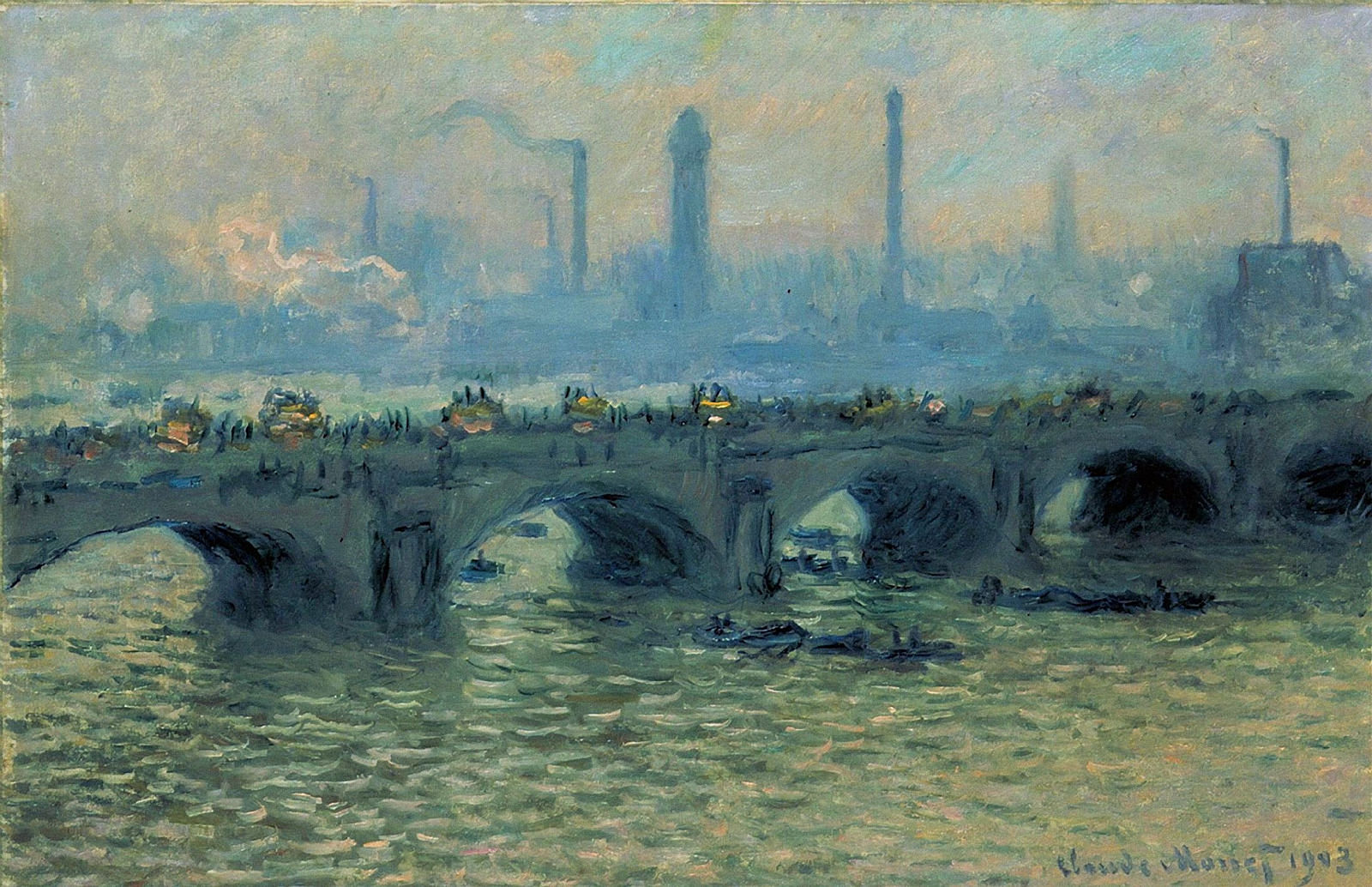artsMonet.com
Claude Monet 1840-1926
Claude Monet - Waterloo Bridge, Grey Weather 1903
 Waterloo Bridge, Grey Weather |
From Ordrupgaard Collection, Copenhagen:
his picture belongs to one of the extensive series on which Monet started at the beginning of the 20th century. From a hotel room in London he painted the view of Waterloo Bridge, the Thames and the factories on the opposite bank in different weather conditions and at different times of the day. The pictures are not so much views as a kind of studies of atmospheric conditions and phenomena: the rippling of the water, the traffic that passes over the bridge, chimney smoke in the background and above all the veil of light or fog that envelops the whole motif.
The flickering, instantaneous character of the pictures was often the result of a long working process. In this case Monet seems to have begun the painting in London and later finished it over an extended period in his studio in Giverny.
Monet was one of the pioneers in the exploration of the Impressionist method of painting. It was thus one of his works that gave the style its name. Crucial to his work is the repeated insistence on painting light, air and water.
Motifs: Landscapes around the Seine, people in natural surroundings, pictures of the modern cities Paris and London, series of selected motifs viewed in different lights, for example the Cathedral in Rouen and haystacks on a field, pictures from his garden in Giverny – of water-lilies, among other things.